黄循财就林志蔚对班级规模及私人学费作用的评论发表演说
黄和林讨论了学校系统中师生比例等问题。
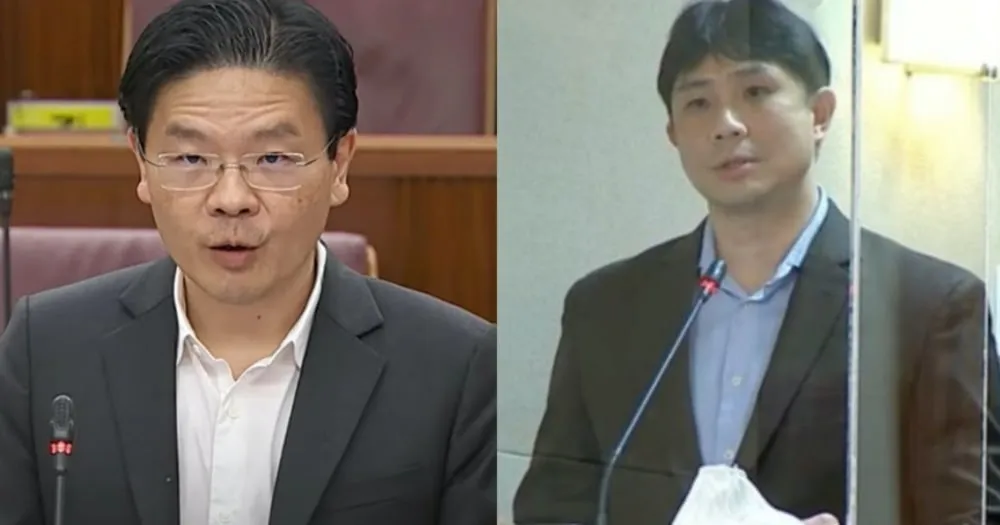
黄和林讨论了学校系统中师生比例等问题。

The 122-page document, launched at the WP headquarters, outlines 125 policy proposals across five key areas: affordability and cost of living, economic growth and opportunities, inclusion and equality, accountability and democracy, and security and geopolitics.
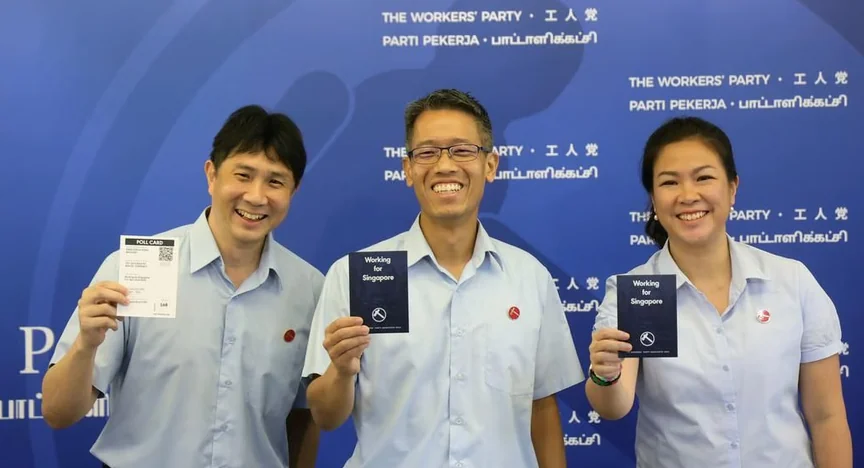
The Workers' Party (WP) released its manifesto for Singapore's 2025 General Election last Thursday (Apr 17) titled “Working for Singapore.”
The 122-page document, launched at the WP headquarters, outlines 125 policy proposals across five key areas: affordability and cost of living, economic growth and opportunities, inclusion and equality, accountability and democracy, and security and geopolitics.
Below is a detailed, reorganized summary of the manifesto’s key points, structured for clarity and coherence.
The WP proposes a range of measures to address Singapore’s high cost of living, focusing on transparency, alternative revenue sources, financial safety nets, and affordability of essential services and goods.
Transparency in Cost Management: Establish a Standing Parliamentary Committee on Cost of Living to monitor and ensure transparency in addressing living expenses.
Alternative Revenue Sources: Reduce reliance on Goods and Services Tax (GST) by:
Recognizing revenue from land sales over the first 9 years immediately.
Increasing the Net Investment Returns Contribution (NIRC) from 50% to 60%.
Introducing taxes on alcohol, carbon, and tobacco.
Implementing a net wealth tax of 0.5-2% on the top 1% of wealth holders.
Setting a minimum corporate tax rate of 15%.
GST Exemptions: Exempt essential items, such as basic food, from GST to lower costs for households.
Redundancy Insurance Scheme: Introduce a scheme providing 40% of the last drawn salary for 6 months, capped at 40% of median income, funded by a 0.1% monthly premium shared between employers and employees.
Retrenchment Benefits: Mandate retrenchment benefits for private sector employers with 25 or more employees.
National Minimum Wage: Set a minimum wage of $1,600 for full-time workers, pro-rated for part-time workers.
Tiered Utility Pricing: Implement tiered pricing for electricity and water with a graduated Water Conservation Tax ranging from 30-60%.
Healthcare Affordability:
Lift the MediSave cap for individuals over 60 to increase access to savings for medical expenses.
Introduce the Silver Living Development Scheme for affordable assisted living facilities.
Include persons with disabilities (PwDs) in Community Health Assist Scheme (CHAS) subsidies.
Establish a National Cancer Care Appeals Board to handle complex cancer cases.
Housing Affordability:
Ensure the Housing Price Index (HPI) ratio is ≤3.0 for first-time Build-To-Order (BTO) buyers.
Offer 70-year BTO leases at lower prices with an option to extend to 99 years.
Implement a universal buy-back scheme for ageing HDB flats.
Support for Local Businesses:
Have the National Environment Agency (NEA) manage hawker centres to keep costs low.
Have the Housing Development Board (HDB) reacquire coffee shops to control rental prices.
Have JTC Corporation expand low-rent industrial spaces for small businesses.
Cap rental growth to the rate of inflation.
Education Subsidies:
Extend preschool fee assistance to all preschools in HDB estates.
Equalize Special Education (SPED) school fees to $13 per month.
Transport Affordability:
Reduce Certificate of Entitlement (COE) volatility by redistributing quotas, categorizing motorcycle COEs by value, requiring private hire cars to be in the Open category, and ensuring equitable Electronic Road Pricing (ERP) 2.0 with discounts.
Establish a National Transport Corporation (NTC) to operate public transport on a non-profit basis.
Provide free off-peak public transport for seniors and PwDs.
Increase subsidies for school buses for students with disabilities.
| Policy Area | Key Proposal | Intended Impact |
| Revenue Alternatives | Wealth tax, increased NIRC, new taxes | Reduce GST reliance, fund social programs |
| Financial Safety Nets | Redundancy insurance, minimum wage | Protect workers from economic shocks |
| Housing | Affordable BTO leases, buy-back scheme | Make homeownership accessible |
| Transport | Non-profit NTC, free off-peak transport | Lower commuting costs for vulnerable groups |
The WP aims to foster economic growth by prioritizing local talent, supporting small businesses, and preparing for an ageing population through innovative industries and financial reforms.
Local Talent Development:
Tie Employment Pass (EP) renewals to skills transfer programs to benefit local workers.
Introduce fixed-term passes for industries with fewer local shortages.
Track and report Key Performance Indicators (KPIs) for foreign worker employment.
Expand intakes at Institutes of Technical Education (ITE), polytechnics, and universities for Shortage Occupation List (SOL) roles.
Lower the SkillsFuture mid-career qualifying age to 35.
Offer interest-free SkillsFuture education loans for Continuing Education and Training (CET).
Allow SkillsFuture Credit to be used for AI subscriptions.
Align curriculum with labor market needs through feedback loops.
Subsidize tradespersons licensing courses for those under 40 and enforce licensing.
Track skills-related underemployment to address workforce mismatches.
Support for SMEs:
Train managers in leadership skills to improve business efficiency.
Benchmark salaries by sector to ensure competitiveness.
Streamline grants for green transitions, such as the Energy Efficient Grant.
Establish an Export-Import Bank (Exim Bank) to support exports, Foreign Direct Investment (FDI), digitalization, and sustainability.
Retirement Age Reform: Abolish the statutory retirement age, complementing the Workplace Fairness Act 2025, without affecting the CPF Payout Age.
Silver Industries: Develop telemedicine, healthtech, mobility tech, elderly nutrition, and assisted living solutions to cater to nearly 1 million elderly by 2030.
CPF Enhancements:
Offer an option to co-invest with the Government of Singapore Investment Corporation (GIC) for higher returns.
Provide special dividends from GIC returns.
Review the CPF Ordinary Account (OA) interest rate formula.
De-link the HDB loan rate from the CPF OA rate, pegging it to 0.1% above the 3-month fixed deposit rate, with a floor of 2.6%.
| Policy Area | Key Proposal | Intended Impact |
| Local Talent | Skills transfer, education expansion | Increase employability of Singaporeans |
| SMEs | Leadership training, green grants | Boost small business competitiveness |
| Silver Industries | Telemedicine, healthtech development | Address needs of ageing population |
| CPF | Co-investment with GIC, revised interest rates | Enhance retirement savings |
The WP seeks to promote social equity by addressing poverty, supporting vulnerable groups, and ensuring fair access to education, healthcare, and employment opportunities.
Social Outcome Tracking: Publish a developmental dashboard covering GDP, inequality, participation, health, and climate goals; adopt the ILO Social Protection Framework; issue annual reports.
Poverty Line: Set an official poverty line through a committee with government, civil society, and academia; peg assistance thresholds to this line.
Support for Parents and Caregivers:
Extend childcare leave per child up to age 12.
Establish Family Care Leave of up to 6 days per year, with the first 3 days employer-paid.
Provide additional leave for multiple care recipients.
Compensate caregivers with tiered payments and CPF contributions.
Expand the Home Caregiving Grant to $600 per month for Instrumental Activities of Daily Living (IADLs).
Create a single support point for parents of disabled children.
Expand the Early Intervention Programme for Infants and Children (EIPIC).
Expand respite care with subsidies for lower-income families.
Offer tax relief for employers with re-entry programs.
Gender Health Gap: Include peri/menopausal check-ups and physiotherapy subsidies in Healthier SG, and provide support for mothers.
Dental Care: Expand subsidies and allow MediSave use for dental care from age 60 by mid-2026.
Polyclinic Access: Increase walk-in slots at polyclinics for seniors and PwDs.
Education Reforms:
Reduce class sizes to 23 (from 29-33, compared to OECD’s 21-24).
Implement later school start times: primary at 8:00 am, secondary at 8:30 am, post-secondary at 9:00 am.
Offer an optional 10-year through-train programme from Primary 1 to Secondary 4, eliminating the Primary School Leaving Examination (PSLE).
Introduce a Teach for Singapore scheme for dual-trained teachers.
Centralize tuition for low-income students on school premises with Edusave incentives.
SkillsFuture for PwDs: Enhance SkillsFuture programs to better support persons with disabilities.
Housing for Singles: Lower the minimum age for buying BTO flats for singles to 28.
Ethnic Integration Policy: Abolish block quotas while retaining neighborhood quotas.
Foreign Spouses: Implement a points-based residency system with transparent rejection reasons.
Workplace Fairness:
Require employers with 10 or more employees to report gender pay gaps.
Ban non-compete clauses for mid- and low-level employees.
Enhance the Workplace Fairness Act to better protect PwDs.
Revert the Working Mother’s Child Relief (WMCR) to a percentage-based system with a $1,000 tax credit for mothers earning less than $25,000.
National Holidays: Reinstate Thaipusam as a national holiday, bringing the total to 12 holidays.
| Policy Area | Key Proposal | Intended Impact |
| Poverty Reduction | Official poverty line, social outcome tracking | Target aid to those in need |
| Caregiver Support | Extended leave, financial aid | Ease burden on families |
| Education Access | Smaller classes, no PSLE option | Improve learning outcomes |
| Workplace Equity | Gender pay gap reporting, no non-compete clauses | Promote fair employment practices |
The WP proposes reforms to strengthen democratic institutions, enhance transparency, and ensure fair elections and governance.
Accountability Mechanisms:
Establish an Office of Ombudsman to investigate complaints and publish annual reports.
Set up Select Committees for each ministry to oversee operations.
Form a non-partisan Parliamentary Budget Office to evaluate policy proposals.
Reform the Presidential Council for Minority Rights (PCMR) to be non-political with fixed terms.
Enhance the Ministerial Code with independent assessments by the Auditor-General and judges.
Regulate lobbying with a public register.
Voice and Agency:
Lower the voting age to 18 to increase youth participation.
Safeguard the independence of institutions like the National Anti-Corruption Commission (NACC), Elections Department (ELD), and Electoral Boundaries Review Committee (EBRC) under multi-partisan oversight.
Prohibit close relatives or political appointees from holding key positions in these institutions.
Anti-Corruption and Elections:
Reconstitute the Corrupt Practices Investigation Bureau (CPIB) as the NACC, led by an independent Commissioner, Deputy Commissioners, and CEO, overseen by a multi-partisan Parliamentary Committee.
Ensure ELD and EBRC operate independently from the Prime Minister’s Office (PMO).
Electoral Reforms:
Abolish Group Representation Constituencies (GRCs), Non-Constituency Member of Parliament (NCMP), and Nominated Member of Parliament (NMP) schemes.
Revert all GRCs to Single Member Constituencies (SMCs).
Require parties to field multiracial slates.
Amend Article 49 to hold by-elections within 3 months for vacant SMCs.
Presidency Reforms:
Revert to a ceremonial President appointed by Parliament.
Establish a separate Senate for discretionary powers.
Allow Parliament to overturn Senate veto with a three-quarters majority.
Local Governance: Abolish the Office of the Mayor and devolve its roles to other structures.
Advertising Transparency:
Require public sector and political advertising to declare sponsored content, disclose spending, measure effectiveness, and apply ROI tests.
Mandate political parties and candidates to disclose payments to digital content creators.
Labor Rights:
Allow independent trade unions.
Review the tripartite system.
Permit workers to form non-NTUC associations.
Information Access:
Institute a Freedom of Information Act for citizen requests.
Declassify National Archives after 25 years, with “Secret” material subject to requests.
Release Cabinet papers after 40 years.
Publish government population projections for 2040 and 2050.
| Policy Area | Key Proposal | Intended Impact |
| Governance | Ombudsman, independent oversight | Increase accountability |
| Electoral System | Abolish GRCs, revert to SMCs | Ensure fairer elections |
| Transparency | Freedom of Information Act, lobbying register | Enhance public trust |
| Labor Rights | Independent unions, non-NTUC associations | Empower workers |
The WP proposes reforms to strengthen judicial independence, enhance public safety, promote environmental sustainability, and bolster national defense and diplomacy.
Judicial Reforms:
Enhance judicial oversight of ministerial decisions under acts like the Foreign Interference (Countermeasures) Act (FICA) and Protection from Online Falsehoods and Manipulation Act (POFMA), with court appeals and in-camera proceedings for national security.
Protect judicial independence by removing fixed-term Judicial Commissioners.
Amend the Administration of Justice Act to remove government immunity.
Restore the “real risk” threshold for scandalizing the judiciary.
Separate the Attorney-General’s roles into Public Prosecutor and Government Legal Advisor.
Raise judges’ retirement age from 65 to 70.
Have capital cases decided by a tribunal of two judges with unanimous decision.
Remove the mandatory death penalty.
Policing and Scams:
Enhance scam protections with an insurance scheme, a $500 consumer liability cap, and a Scam Victim Restitution Fund.
Have the Competition and Consumer Commission of Singapore (CCCS) enforce standards.
Safeguard arrested persons’ rights with legal information, early lawyer access, and video-recorded interviews.
Establish an Independent Police Complaints Commission.
Community Organizations:
Depoliticize taxpayer-funded organizations.
Abolish the Grassroots Advisor (GRA) position in the People’s Association (PA), led by neutral civil servants.
Foster ground-up National Sports Associations (NSAs).
Create an independent arts body for licensing and grants.
Environmental Sustainability:
Balance urban development with stronger environmental laws.
Monitor land use and designate secondary forests as reserves.
Conduct public Environmental Impact Assessments (EIAs).
Increase renewables to 30% by 2030, 40% by 2035, and 50% by 2040.
Track natural capital in national income.
Preserve forests and mangroves.
Address greenwashing.
Make public EIAs and Environmental Management and Monitoring Plans (EMMPs).
Anti-Discrimination:
Legislate against discrimination.
Survey workplace harassment.
Criminalize uncovered behaviors.
National Defense:
Strengthen countermeasures against grey zone tactics.
Increase surveillance.
Enhance defense agreements.
Promote media literacy in schools and National Service (NS).
Protect subsea interests.
Enhance repair capabilities.
Implement psychological fitness assessments like the US Army General Assessment Tool (GAT).
Provide resilience training.
Defend digital space with Digital and Intelligence Service (DIS) integration.
Establish a vulnerability equities process.
Security Budgets:
Raise National Servicemen Full-time (NSFs)’ salaries to the median $1,600 per month, renamed “NS salary” with CPF contributions.
Ensure equal opportunities in the Singapore Armed Forces (SAF).
Provide fair representation.
Increase transparency in the Ministry of Defence (MINDEF) budget, currently $23.44 billion for FY2025, with $22.0 billion for military expenditure, broken down into equipment, maintenance, allowances, and salaries.
Grant Public Accounts Committee access.
Internal Resilience:
Maintain domestic manufacturing for essentials.
Grant legislative powers for emergencies.
Increase local farm uptake to 30% of nutritional needs by 2030.
Establish long-term contracts with institutional buyers.
Repeal the Internal Security Act (ISA).
Replace ISA with an anti-terrorism law with limited detention and court trials.
Diplomacy and Trade:
Strengthen ASEAN with majority voting, enforcement, collaboration, and people-to-people exchanges.
Support Myanmar stability via the ASEAN Five-Point Consensus.
Enforce arms export bans.
Support maritime peace in East Asia.
Encourage adherence to the United Nations Convention on the Law of the Sea (UNCLOS).
Finalize the South China Sea (SCS) Code of Conduct.
Recognize the State of Palestine and support a two-state solution.
Establish a Singapore Agency for International Development for Official Development Assistance (ODA), focusing on Southeast Asia.
| Policy Area | Key Proposal | Intended Impact |
| Judicial Independence | Separate AG roles, remove mandatory death penalty | Strengthen rule of law |
| Public Safety | Scam protections, police complaints commission | Enhance consumer and citizen protections |
| Environment | Increase renewables, preserve forests | Promote sustainability |
| Diplomacy | Strengthen ASEAN, recognize Palestine | Foster regional and global stability |
The WP’s manifesto builds on its 2020 manifesto, retaining unimplemented proposals and introducing new ones based on resident feedback.
The party emphasizes that its policies are developed independently of the ruling People’s Action Party (PAP), focusing on gaps in existing systems.
While the WP’s proposals are ambitious, their feasibility depends on parliamentary support and economic conditions.
For instance, the wealth tax and GST exemptions may face resistance due to fiscal implications, while electoral reforms like abolishing GRCs could spark debate over representation.
The WP’s focus on affordability and equality resonates with public concerns, but implementation would require careful prioritization and collaboration.
黄志明与卡拉·马尼卡姆的对决揭示信任与分裂的较量

2025年5月3日,Jalan Kayu单选区(Jalan Kayu SMC)的29,565名选民将站在十字路口,选择两条崎岖路径之一:人民行动党(PAP)职总秘书长黄志明,背负2024年职总英康收购案的污点,宛如一辆伤痕累累的战车;抑或红点团结党(RDU)的激进教育家卡拉·马尼卡姆,其2021年前进党诉讼风波暴露的个人主义倾向,恰似一艘独木舟在政治风浪中摇摆 [译注:2025年4月22日,红点团结党宣布退出Jalan Kayu单选区,支持工人党参选,以避免多角竞争。本文基于此前候选人假设撰写]。
黄志明曾于2009至2013年担任新加坡空军总长,2013至2015年升任三军总长,展现军事生涯的严谨与权威。2015年,他代表人民行动党当选巴西立-榜鹅集选区国会议员,但在2020年竞逐盛港集选区时,以47.88%的得票率铩羽而归。自2018年起,他担任职总秘书长,力推劳动力发展和工人权益政策,试图为职场注入活力。然而,2024年职总英康收购案令其公信力蒙尘,被舆论抨击“要么纵容利益输送,要么严重失职”,如同一座信任堡垒被风暴侵蚀。
卡拉·马尼卡姆是单亲母亲、特殊教育专家兼中小企业主,拥有终身教育硕士学位,散发草根魅力。她是新加坡武装部队首批女军官之一,服役七年,官至中尉,彰显坚韧。2020年,她代表前进党竞选义顺集选区,获38.76%选票;同年12月被开除,2021年提起“不当终止党籍”诉讼,后和解。此事暴露其“独行侠”作风。如今,她加入红点团结党,聚焦职业培训和生活成本压力,试图以小党之力撬动选民心弦。
2024年7月,职总与德国保险巨头英杰华(Allianz)提出22亿新元的收购案,宣称将增强职总英康的竞争力。8月,黄志明与职总主席达纳拉克希米发表联合声明,信誓旦旦保证英杰华将维护英康的社会使命。然而,细节如暗礁般浮现,险些葬送交易。英杰华计划提取18.5亿新元资本,近半投资可迅速回笼,恐耗尽维持低保费的储备金,宛如从社会保障的根基抽梁换柱。2024年10月14日,文化、社区及青年部长唐振辉代表政府果断叫停交易,认定其背离英康2022年公司化目标,即强化财务实力以惠及保单持有人。
黄志明坚称职总中央委员会对资本提取计划毫不知情,试图撇清责任,但前英康首席执行官陈瑞财痛斥该计划“违背诚信”,直指交易暗藏私利。新加坡管理大学副教授陈庆文直言,这种无知“令人瞠目结舌” [译注:意指难以置信的疏忽],如同指挥官在战场上迷失方向。2025年1月,黄志明将就业不稳定性归咎于人工智能,回避外籍劳工政策争议,被批“高高在上”,如同一座与民意脱节的孤塔。2020年盛港集选区失利已暴露其政治软肋,选民不禁质疑:他究竟是工人代言人,还是行动党机器的忠实齿轮?
2021年7月,卡拉向高等法院起诉前进党,后移交国家法院,掀起政治风波。她要求宣告2020年12月开除决定“违法无效”,并追讨1万新元竞选开支,指控前进党违宪,未给予她申辩机会。前进党提交七份宣誓书,包括党魁陈清木的证词,指控她破坏团队凝聚力、抗命不遵。同区候选人郑德源透露,她跳过团队会议、擅自组织走访,形同独奏而非合唱。17人联署反对其复职,干部以55:11的投票支持开除决定。
陈清木回忆,2020年11月会议上,卡拉“挑衅好斗”,高喊“证据呢?证据呢?”,如同一头不甘受缚的猛兽。她通过脸书和法庭公开控诉,展现原则性,却也暴露分裂倾向,宛如在政治舞台上独舞。转投红点团结党被批“机会主义”,如同一名独行侠在寻找新战场。诉讼虽和解,但卡拉的个人主义标签挥之不去,恐难适应新加坡强调协作的政治生态。
黄志明依托行动党强大的基层网络,Jalan Kayu单选区与宏茂桥集选区的历史渊源为其加分。然而,英康风波重创公信力,盛港失利阴影犹存,选民质疑其是否真为工人发声。卡拉的草根形象贴近民心,反对党协调机制或助其整合选票,但诉讼风波暴露团队协作缺陷,红点团结党知名度有限,难以撼动主流。工人党未派候选人,人民力量党若参选可能分散反对派选票,但红点团结党与其他小党的协调或可缓解分裂风险。这场选举无关谁是耀眼的明星,而是两块“卡由”(马来语“木头”谐音,喻指不完美的候选人)中,谁能更稳固地承载选民的期望。
The PAP, WP, SDP and PSP have rolled out their housing manifestos, each claiming to fix voters' housing concerns. But do they deliver?
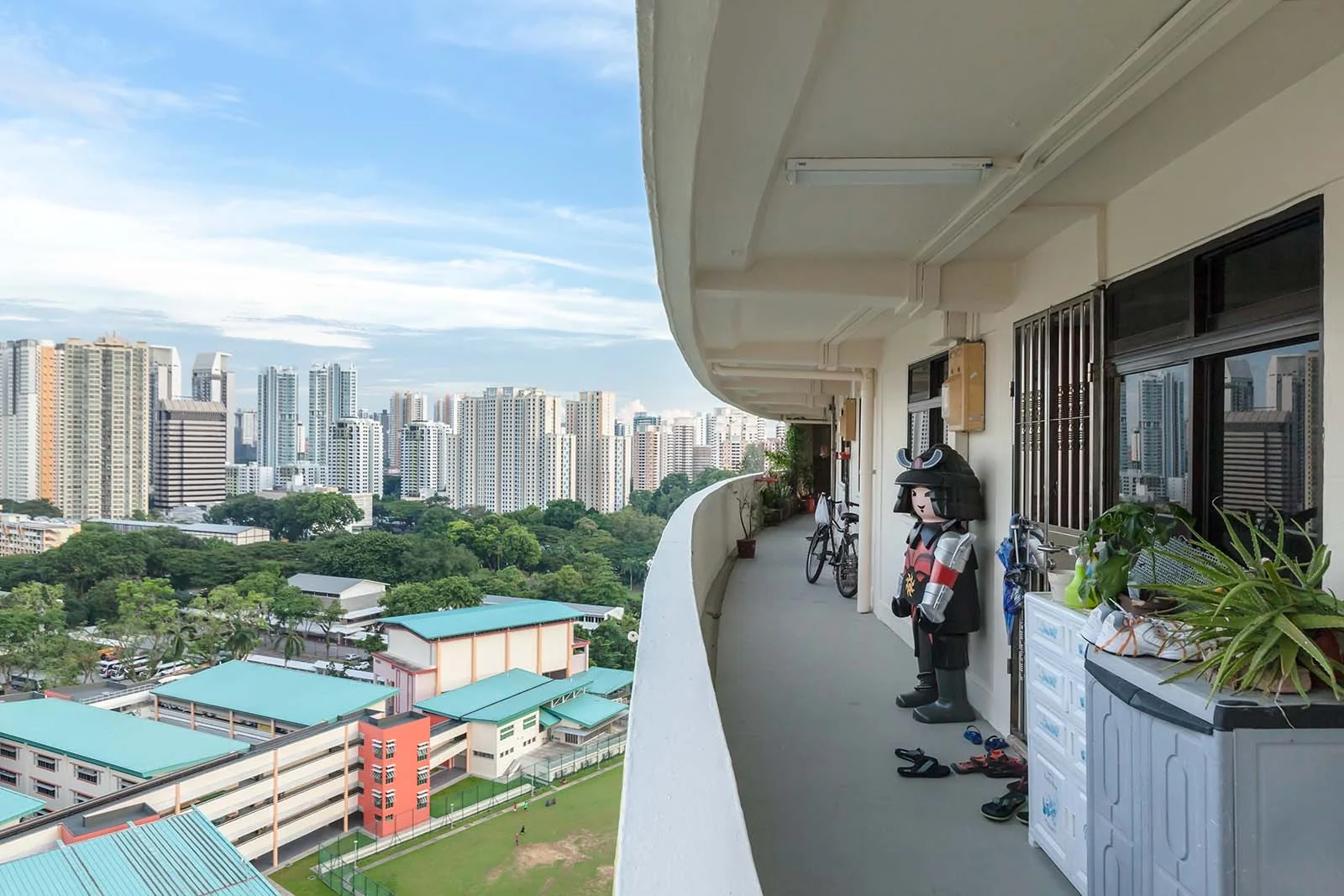
With HDB resale prices up 50% since 2020 and BTO waiting times stretching to five years, affordability and access are strangling young couples, singles, and retirees alike.
The 99-year lease model, once a cornerstone of stability, now looms as a ticking time bomb for ageing flats.
The PAP, WP, SDP and PSP have rolled out their housing manifestos, each claiming to fix voters' housing concerns.
But do they deliver?
Flood the market with supply, tweak eligibilit, and tackle lease decay head-on
The PAP, Singapore’s ruling juggernaut, promises to build over 50,000 new HDB flats in three years—enough for an entire Ang Mo Kio town.
They’re doubling down on Shorter Waiting Time flats to cut BTO delays, exploring options for higher-income couples and singles, and pushing the Voluntary Early Redevelopment Scheme (VERS) to rejuvenate old estates like Kallang-Whampoa.
More flats don’t automatically mean cheaper flats
The Housing Price Index (HPI) ratio—median flat price to median income—hovers around 5-6, far from affordable for a $80,000-a-year household eyeing a $400,000 4-room BTO.
PAP’s reliance on grants, like the Enhanced CPF Housing Grant, is a band-aid, not a cure, when resale prices have soared 50% in five years.
VERS sounds promising but lacks teeth—its voluntary nature and vague compensation details leave residents guessing, unlike the more decisive Selective En bloc Redevelopment Scheme (SERS).
Expanding access for singles and higher-income groups is inclusive but risks diverting resources from lower-income families who can’t even dream of a $500,000 resale flat.
And while 50,000 flats sound impressive, global supply chain crunches and labor shortages could derail delivery, as seen in past construction delays.
Stability, not affordability
PAP’s plan is feasible, backed by HDB’s machine and approximately $1.2 trillion in reserves, but it’s incremental, not transformative.
PAP is betting on stability, not affordability, leaving young Singaporeans stuck in a cycle of grants and grit.
The Workers’ Party takes a different tack, zeroing in on affordability with a promise to slash the HPI ratio to 3.0 or below—meaning a 4-room flat for a median-income family would cost no more than $240,000.
They propose 70-year BTO leases at lower prices, with an option to top up to 99 years, and a universal buy-back scheme to rescue retirees from depreciating flats.
To sweeten the deal, WP wants HDB to reacquire coffee shops and cap rents to inflation, easing living costs in estates.
Gutsy policy proposals but no clarity on how to fund it
WP's proposed housing policies speak directly to middle-class families and retirees crushed by prices.
An HPI of 3.0 would be a game-changer, making homeownership a reality, not a pipe dream.
The 70-year lease option is clever, offering flexibility for cash-strapped buyers, while the buy-back scheme tackles lease decay with precision, ensuring grannies in 40-year-old flats aren’t left penniless.
A very costly proposal
But ambition comes at a cost.
Dropping the HPI to 3.0 means slashing flat prices by 40-50%, requiring massive subsidies or land cost write-offs that could dent fiscal reserves or spike taxes.
The buy-back scheme, while noble, could cost billions if applied universally, and WP’s manifesto is mum on funding.
Worse, there’s no clear plan to boost flat supply, leaving waiting times untouched—a glaring blind spot when young couples are begging for faster BTOs.
WP’s heart is in the right place, but its wallet might not be.
The Progress Singapore Party swings for the fences with its Affordable Homes Scheme (AHS), scrapping BTOs to sell flats without land costs—recovered only on resale. This could halve prices, dropping a $400,000 flat to $200,000.
Singles aged 28+ get to buy 2- and 3-room flats anywhere, more flats will be built based on demand, and a Millennial Apartments Scheme offers short-term rentals in prime spots for young folks.
It’s a bold, youth-centric vision, promising to break the affordability curse and free CPF savings for retirement.
Revolutionary if it works, catastrophic if it flops
AHS is a stroke of genius on paper, tackling the root of high prices: land costs, which eat up half a flat’s value.
Letting singles buy at 28 in any estate is a nod to a growing demographic—30% of adults are single—while rental apartments cater to millennials delaying marriage.
But genius comes with glitches.
Deferring land costs guts government revenue ($20 billion yearly from land sales), risking budget shortfalls or reserve dips that Singapore’s fiscal hawks will savage.
Resale markets could tank as cheap new flats flood in, rattling homeowners’ wealth.
AHS demands a complete HDB overhaul, a bureaucratic nightmare to implement.
The Millennial Scheme sounds sexy but faces land scarcity in prime areas, limiting scale.
And PSP’s silence on lease decay is a fatal flaw—retirees with 30 years left on their flats get no lifeline.
It’s a high-stakes gamble: revolutionary if it works, catastrophic if it flops.
Slash prices with NOM flats, prioritize families, and secure retirements
The Singapore Democratic Party (SDP) proposes a transformative Non-Open Market (NOM) Scheme, selling HDB flats at cost—excluding land costs—for as low as S$70,000 (2-room) to S$240,000 (5-room).
NOM flats can’t be resold on the open market, only back to HDB, curbing speculation.
The Young Families Priority Scheme (YFPS) fast-tracks flat access for couples with kids, while singles, single parents, and low-income renters get broader eligibility.
An enhanced Lease Buy-Back Scheme offers seniors inflation-adjusted annuities, and a buffer stock of flats aims to slash waiting times.
A sophisticated Vickrey-Clarke-Groves (VCG) balloting system promises efficient allocation.
Affordability and inclusivity with a side of complexity
SDP’s NOM Scheme is a masterstroke for affordability, potentially cutting a 4-room flat from S$400,000 to S$160,000, freeing CPF savings for retirement and family needs.
YFPS directly tackles Singapore’s dismal 0.78 Total Fertility Rate by prioritizing young families, while inclusive policies for singles and single parents resonate with 30% of adults who are single.
The buffer stock and VCG system could shrink waiting times, addressing a key pain point.
The annuity-based Lease Buy-Back is a lifeline for retirees, ensuring dignity without depleting equity.
Bold but tricky to execute
NOM’s cost-recovery model, while appealing, risks government revenue losses similar to PSP’s AHS, though SDP’s resale restrictions may stabilize markets better.
Converting existing flats to NOM could spark legal or financial disputes over compensation.
The VCG system, while innovative, may confuse applicants unused to bidding premiums, and maintaining a buffer stock demands precise demographic forecasting to avoid oversupply.
Funding grants for low-income households (up to S$60,000) and annuities could strain reserves without clear fiscal plans.
SDP’s vision is bold and inclusive but hinges on complex execution and public buy-in.
Singapore’s housing crisis—skyrocketing prices, endless waits, and lease decay—demands more than manifesto bravado.
PAP offers stability and supply but ducks affordability, betting voters will trust its track record over flashy fixes. Its plan will keep the system humming but won’t ease the squeeze.
WP’s price-slashing ambition and retiree focus hit the mark but stumble on funding and supply, risking empty promises. Its heart is right, but its math is shaky.
PSP’s radical AHS and youth appeal are electrifying but teeter on fiscal recklessness, ignoring older voters’ fears and homeowners who see housing as their nest egg. Its vision is thrilling but could crash the economy.
SDP balances affordability, inclusivity, and demographic fixes with NOM flats and family-focused policies, but its complex mechanisms and revenue risks need ironclad execution. Its plan is ambitious but navigates a tightrope.
GE2025’s housing debate exposes a truth - no party has a silver bullet. Voters must weigh stability against bold reform, affordability against fiscal prudence, and inclusivity against execution risks.
| Aspect | PAP | WP | PSP | SDP |
| Key Proposals | 50,000+ new flats, Shorter Waiting Time flats, VERS, options for singles/higher-income. | HPI ≤3.0, 70-year leases, universal buy-back, coffee shop rent caps. | AHS (no land cost), singles 28+, more supply, Millennial Apartments. | NOM Scheme (cost-recovery flats), YFPS, enhanced Lease Buy-Back, buffer stock, VCG balloting. |
| Affordability | Relies on supply and grants; no direct price cuts. | Targets HPI ≤3.0; flexible leases for cost savings. | AHS removes land costs; highly affordable but disruptive. | NOM flats slash prices (e.g., S$160,000 for 4-room); grants for low-income. |
| Lease Decay | VERS rejuvenates old estates; proactive but vague. | Universal buy-back; direct but costly. | No specific measure; overlooks ageing flats. | Enhanced Lease Buy-Back with annuities; preserves equity. |
| Supply and Access | Strong focus on 50,000+ flats; inclusive for singles/higher-income. | Limited supply focus; emphasizes affordability over volume. | Increases supply; strong singles’ access at 28+. | Buffer stock to cut waits; inclusive for singles, single parents, renters. |
| Innovation | Incremental; builds on BTO/VERS frameworks. | Moderate; new lease options and buy-back scheme. | Transformative; AHS and Millennial Scheme rethink housing models. | Transformative; NOM, VCG, and YFPS overhaul pricing and allocation. |
| Feasibility | High; leverages HDB’s systems and reserves. | Moderate; HPI target and buy-back costly but implementable. | Low to moderate; AHS fiscally risky, others feasible. | Moderate; NOM and VCG complex but actionable with reserves. |
| Voter Appeal | Likely appeals to families, older voters, and those prioritizing stability and supply. | Likely attracts middle-class families, retirees, and young couples seeking affordability. | Likely draws younger voters, singles, and reformists open to bold changes. | Likely appeals to young families, singles, retirees, and those valuing inclusivity and affordability. |
The manifesto focuses on reducing economic inequality, enhancing social welfare, reforming education, and strengthening democratic governance.
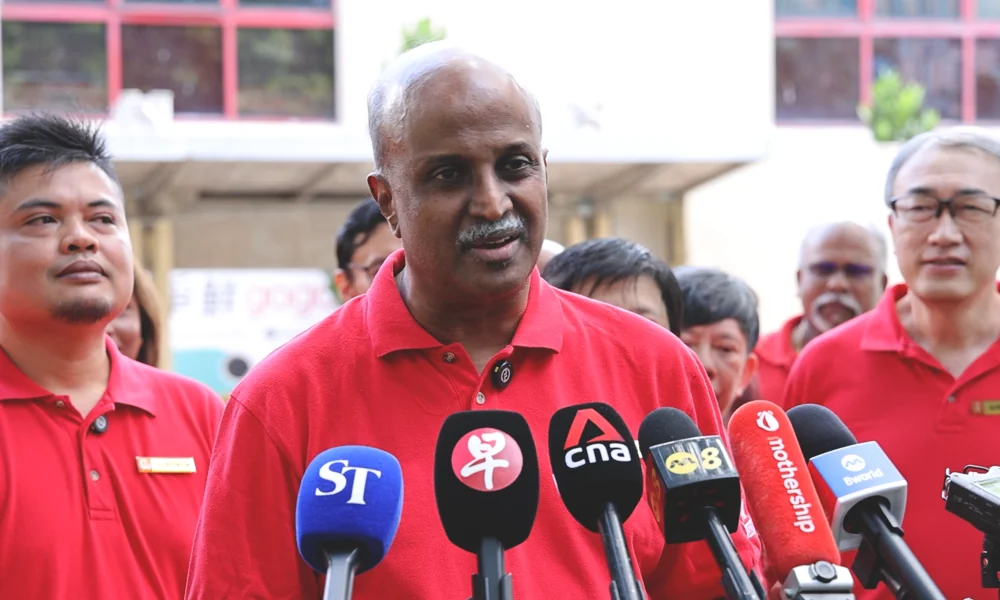
The Singapore Democratic Party (SDP) released its manifesto for Singapore's 2025 General Election under the slogan “Thrive, Not Just Survive,” presenting a comprehensive set of policy proposals to address key national issues.
The SDP highlights Singapore’s rising cost of living, driven by high housing prices, healthcare costs, and regressive taxation like the Goods and Services Tax (GST). The party critiques policies that burden the middle and lower classes while wealth concentrates among the elite.
| Policy Area | Key Proposal | Intended Impact |
|---|---|---|
| Taxation | Abolish GST on essentials, tax top 1%, reinstate estate duty | Reduce regressive tax burden, fund social programs |
| Salaries | Cut ministerial salaries | Redirect funds to aid the poor |
| Wages | Introduce minimum wage | Ensure dignified living standards |
| Reserves | Increase transparency | Promote equitable use of public funds |
The SDP criticizes the high cost of Housing and Development Board (HDB) flats, driven by land costs and the 99-year lease decay issue. The party proposes restructuring the housing system to prioritize affordability and sustainability.
| Policy Area | Key Proposal | Intended Impact |
|---|---|---|
| NOM Scheme | Cap HDB flats at S$270,000, exclude land costs | Make housing affordable, curb speculation |
| VERS | Sustainable en-bloc redevelopment | Address lease decay, maintain affordability |
| Supply | Build more flats | Reduce waiting times, stabilize prices |
The SDP aims to prioritize Singaporeans in employment, reduce reliance on foreign labor, and address wage stagnation, particularly for Professionals, Managers, Executives, and Technicians (PMETs), in a workforce where foreign workers comprise ~39% (2024 data).
| Policy Area | Key Proposal | Intended Impact |
|---|---|---|
| Wages | Minimum wage | Ensure fair compensation |
| Employment | Talent Track Scheme, prioritize Singaporeans | Protect local job opportunities |
| Foreign Labor | Reduce reliance | Increase jobs for Singaporeans |
| CPF | Scrap Minimum Sum Scheme | Enhance retirement flexibility |
The SDP seeks to strengthen social support, focusing on healthcare, marginalized communities, and gender equality, replacing complex schemes with accessible programs.
| Policy Area | Key Proposal | Intended Impact |
|---|---|---|
| Healthcare | NHIF, free maternal/pediatric care | Reduce medical costs, support families |
| Malay Community | 10-point upliftment plan | Address inequality, promote inclusion |
| Gender Equality | Women’s Wing initiatives | Enhance women’s rights, work-life balance |
The SDP critiques Singapore’s exam-driven education system for fostering stress and inequality, proposing reforms to prioritize holistic development.
| Policy Area | Key Proposal | Intended Impact |
|---|---|---|
| PSLE | Abolish PSLE | Reduce exam stress, promote holistic growth |
| Class Sizes | Smaller classes | Enhance personalized learning |
| Curriculum | Focus on critical thinking, creativity | Prepare students for diverse futures |
| Equity | Address disparities | Ensure equal educational opportunities |
The SDP addresses concerns over the People’s Action Party’s (PAP) dominance and restrictions on freedom of expression, seeking to enhance transparency and civil liberties.
| Policy Area | Key Proposal | Intended Impact |
|---|---|---|
| Salaries | Reduce ministerial salaries | Promote public service ethos |
| Free Speech | Reform POFMA, protect rights | Enhance democratic expression |
| Constitution | Strengthen civil liberties | Foster open society |
| GLCs | Divest inefficient GLCs | Promote market competition |
| Regional Ties | Democratic partnerships | Strengthen regional democratic values |
The SDP emphasizes environmental sustainability, addressing climate change and resource management in a densely populated nation.
| Policy Area | Key Proposal | Intended Impact |
|---|---|---|
| Climate | Strengthen Paris Agreement commitments | Reduce carbon footprint |
| EVs | Incentivize EV adoption | Lower transportation emissions |
| Population | Oppose 10 million target | Ensure sustainable growth |
| Haze | Enforce Transboundary Haze Act | Address regional pollution |
| Waste | Reduce single-use packaging | Minimize environmental impact |
Launched ahead of the May 3, 2025, General Election, the SDP’s manifesto reflects its social liberal democratic vision, emphasizing affordability, equity, and sustainability.
Key proposals, such as the S$270,000 HDB price cap and opposition to a 10 million population, include specific figures, but most policies (e.g., building more flats, minimum wage, class size reductions) lack quantitative details, such as numerical targets or cost estimates.
Implementation challenges include fiscal costs (e.g., NHIF, GST exemptions), political resistance to bold reforms (e.g., PSLE abolition, GLC divestment), and the SDP’s limited electoral success (no seats since 1997).
If you have no time to read all manifestos, just read this summary.
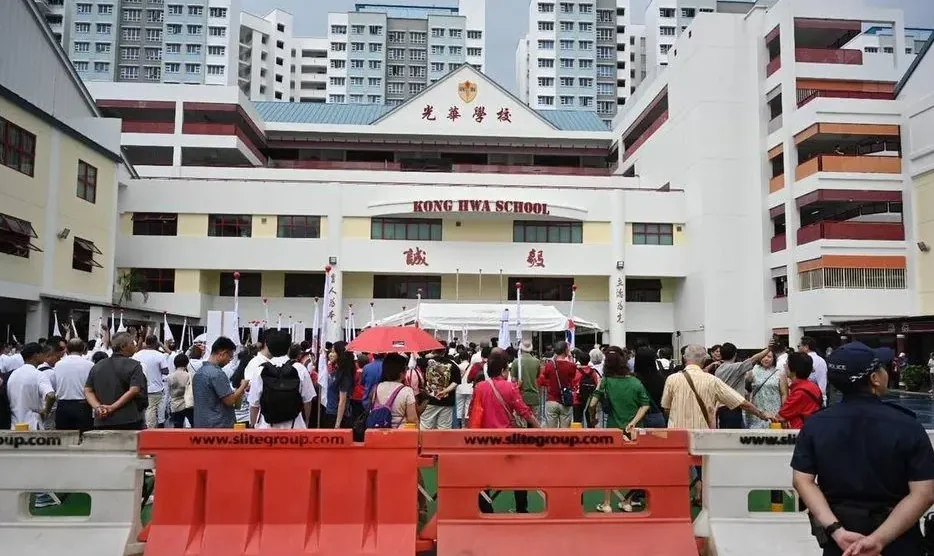
The manifestos of the People’s Action Party (PAP), Workers’ Party (WP), Progress Singapore Party (PSP), and Singapore Democratic Party (SDP) for the 2025 Singapore General Election reveal a spectrum of priorities, as summarized in the following table:
| Aspect | PAP | WP | PSP | SDP |
|---|---|---|---|---|
| Vision | Stability and continuity; incremental improvements. | Pragmatic reform; balanced change. | Bold transformation; radical reforms. | Social justice and equity; transformative democratic change. |
| Cost of Living | Enhances Assurance Package, CDC vouchers, maintains GST at 9% with offsets. | GST exemptions for essentials, National Minimum Wage ($1,600). | Reduce GST to 7%, exempt essentials, defer HDB land costs. | Abolish GST on essentials, tax top 1%, reinstate estate duty, minimum wage. |
| Housing | Over 50,000 new HDB flats, Shorter Waiting Time flats, VERS rejuvenation. | 70-year BTO leases, universal buy-back schemes, affordability focus. | Affordable Homes Scheme (AHS), Millennial Apartments Scheme. | Non-Open Market (NOM) Scheme with $270,000 HDB price cap, sustainable VERS, more flats. |
| Jobs and Wages | Supports PMETs, fair employment safeguards, Progressive Wage Credit. | EP reforms, SkillsFuture enhancements, local talent priority. | $2,250 minimum living wage, EP quotas, retrenchment benefits. | Minimum wage, Talent Track Scheme for foreign PMETs, reduce foreign labor, scrap CPF Minimum Sum. |
| Social Safety Net | Reinforces ComCare, Silver Support, Workfare enhancements. | Expands healthcare subsidies, simplifies assistance, retiree support. | $1,800 minimum living income, caregiver allowances, MediSave expansion. | National Health Investment Fund (NHIF), free maternal/pediatric care, 10-point Malay community plan, gender equality initiatives. |
| Education | Customized education, SPED expansion, lifelong learning. | Class size caps at 23, holistic education, later school start times. | 10-year through-train program, class size reduction, local student priority. | Abolish PSLE, reduce class sizes, holistic curriculum, address socio-economic disparities. |
| Governance | Maintains stability, anti-corruption, improves communication. | Office of Ombudsman, standing committees, GRC abolition. | Freedom of Information Act, asset declaration, GRC abolition. | Reduce ministerial salaries, reform POFMA, constitutional reforms for civil liberties, divest GLCs, regional democratic partnerships. |
| Environment | New parks, marine parks, transport infrastructure. | Renewable energy targets (50% by 2040), forest conservation. | Environmental Impact Assessments, hasten renewables. | Strengthen Paris Agreement, EV incentives, oppose 10 million population, enforce haze act, reduce single-use packaging. |
| Feasibility | Highly feasible; leverages existing systems. | Feasible; builds on existing frameworks. | Ambitious but risky; requires significant changes. | Highly ambitious; faces significant fiscal and political challenges. |
| Voter Appeal | Appeals to conservative voters, older generations, middle to upper-income brackets valuing stability and economic growth. | Attracts middle-class families, younger voters concerned about housing and education, seeking a stronger check on PAP. | Draws younger demographics, lower-income workers, reformists willing to risk significant change. | Appeals to lower-income groups, youth, and reformists frustrated with inequality and governance restrictions, but may alienate moderates due to radicalism. |
This table highlights the diversity in approach, with PAP focusing on continuity, WP on balanced reform, PSP on transformative change, and SDP on social justice and democratic overhaul.
Addressing Public Concerns:
Housing:
Governance and Democracy:
Economic Growth:
Social Safety Net:
PAP: Appeals to voters valuing economic stability, strong governance, and proven leadership, attracting conservative voters, older generations, and middle to upper-income brackets. Its continuity is robust but may seem out-of-touch with reformists.
WP: Offers a credible, pragmatic alternative, appealing to middle-class families, younger voters concerned about housing and education, and those desiring a stronger check on PAP. Its balanced approach is feasible but may lack transformative vision.
PSP: Presents a bold platform for change, drawing support from younger demographics, lower-income workers, and reformists willing to risk significant change. Its ambition is appealing but faces feasibility challenges.
SDP: Champions social justice and democratic reform, appealing to lower-income groups, youth, and reformists frustrated with inequality and governance restrictions. Its radical proposals (e.g., abolish PSLE, scrap CPF Minimum Sum) resonate with those seeking systemic change but risk alienating moderates due to limited electoral track record and vague costings.
The election outcome on May 3, 2025, will hinge on voter priorities—stability versus change—and how each party builds trust amid economic and social challenges.
| Su | Mo | Tu | We | Th | Fr | Sa |
|---|---|---|---|---|---|---|
30 | 31 | 1 | 2 | 3 | 4 | 5 |
6 | 7 | 8 | 9 | 10 | 11 | 12 |
13 | 14 | 15 | 16 | 17 | 18 | 19 |
20 | 21 | 22 | 23 | 24 | 25 | 26 |
27 | 28 | 29 | 30 | 1 | 2 | 3 |